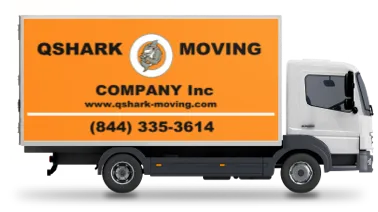What is Shrink Wrap?
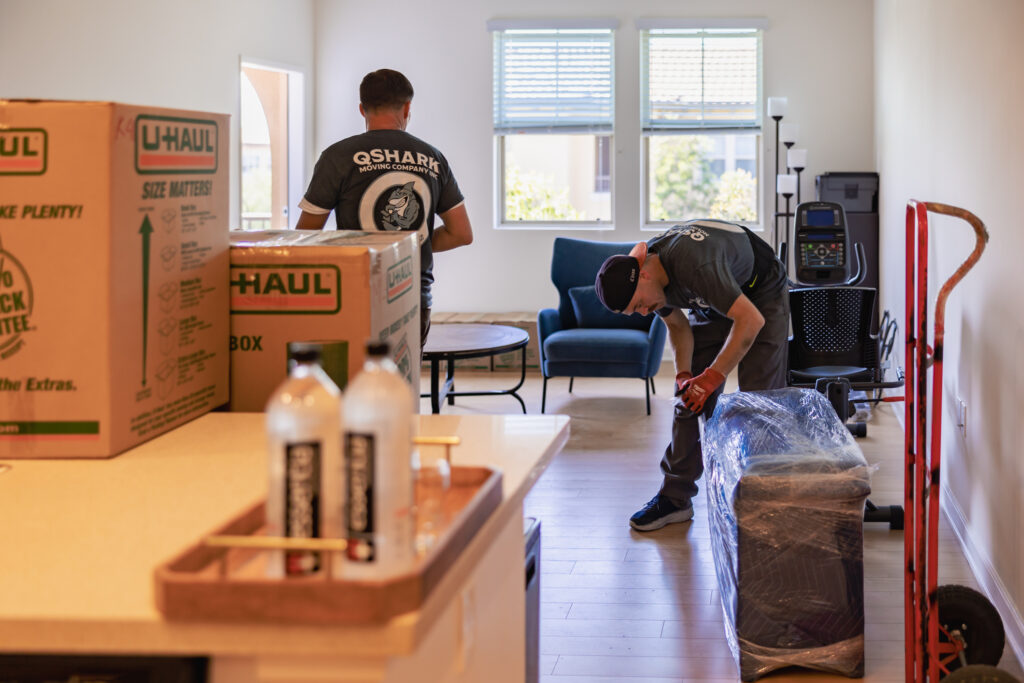
Summary: This article offers an all-encompassing look at shrink wrap and its pivotal role in the moving industry. From the science behind it to practical usage tips, QShark Moving Company guides you through everything you need to know to ensure safe and efficient moving.
| Section | Summary |
|---|---|
| Introduction | Introduces shrink wrap and its importance in the moving industry, with a special mention of QShark Moving Company’s commitment to quality. |
| Types of Shrink Wrap | Describes the different types of shrink wrap, including Polyolefin, PVC, and Polyethylene, and their specific uses. |
| The Science Behind Shrink Wrap | Explains the manufacturing process and how shrink wrap shrinks and adapts around items. |
| Benefits in Moving Industry | Details how shrink wrap protects against dust, secures loads, and offers clarity, making it cost-effective for moving. |
| Step-by-Step Guide to Shrink Wrapping | Provides a guide on materials needed, preparation, wrapping techniques, and safety considerations for effective shrink wrapping. |
| Special Considerations | Discusses handling of fragile items, large objects, seasonal considerations, and regulatory factors in using shrink wrap. |
| Shrink Wrap in Sustainable Moving Practices | Addresses the environmental impact of shrink wrap and how to make its use more sustainable, including recycling and proper disposal. |
| Case Studies | Presents real-life examples of moves with and without shrink wrap, illustrating its effectiveness in the moving industry. |
| Frequently Asked Questions | Addresses common questions and provides expert advice on the use of shrink wrap in moving. |
| Conclusion | Summarizes the importance of shrink wrap in ensuring safe and efficient moves, and QShark Moving |
I. Introduction
Shrink wrap, a common term that may sound familiar, plays an integral role in various industries. In this article, we will dive in-depth into shrink wrap and its immense significance in the moving industry, particularly how QShark Moving Company leverages this resource to ensure quality service.
A. Definition of Shrink Wrap
- Shrink wrap is a plastic film used to wrap products and packages.
- When heat is applied to this film, it shrinks tightly over whatever it covers.
B. Brief History and Evolution of Shrink Wrap
- Shrink wrap was first used in the late 1950s to replace bulky and less effective packaging materials.
- Over time, its manufacturing process has evolved, making it more cost-effective and efficient.
C. Introduction to its Significance in the Moving Industry
Shrink wrap is an invaluable tool for professional movers. Here’s why:
- Protection: It safeguards furniture and other items from scratches and damages.
- Efficiency: It aids in making the packing process faster and more efficient.
- Stability: It helps to keep items tightly bound, preventing movement during transportation.
D. Mention of QShark Moving Company’s Commitment to Quality Service
QShark Moving Company, a leading moving service provider, heavily relies on shrink wrap to ensure that our clients’ belongings are safely and efficiently transported. Whether you are looking for local movers or need help with a long-distance move, QShark places paramount importance on utilizing the best materials and techniques.
In the next section, we will explore the different types of shrink wrap available and how to select the right type for different items.
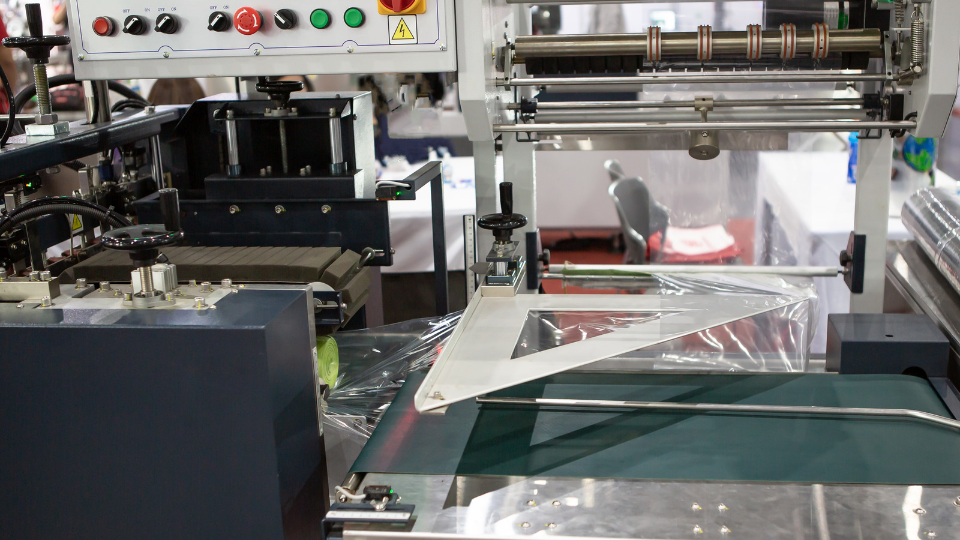
II. Types of Shrink Wrap
Understanding the varieties of shrink wrap is crucial for selecting the right material for each specific task. Let’s explore the common types:
A. Polyolefin
- Polyolefin is versatile and can be used for wrapping a wide range of products.
- It is characterized by its high clarity, making it easy to see what is wrapped.
- QShark Moving Company recommends this for delicate items due to its softer texture.
B. PVC (Polyvinyl Chloride)
- PVC shrink wrap is quite popular due to its strength and durability.
- It’s ideal for items that require a tight seal because it shrinks at lower temperatures.
- However, when sealed, it releases harmful chemicals, so it’s not ideal for food items.
C. Polyethylene
- Polyethylene is the most commonly used shrink wrap.
- It’s known for its high strength and is used for wrapping larger items like furniture.
- Professional movers often use this type due to its toughness.
D. Importance of Selecting the Right Type for Different Items
Choosing the right type of shrink wrap is vital to ensure maximum protection and efficiency during the moving process. It is important to consider:
- The size and shape of the item
- The fragility of the item
- Environmental considerations, like temperature
III. The Science Behind Shrink Wrap
Shrink wrap is more than just plastic; there’s a science behind how it functions.
A. The Manufacturing Process
- Shrink wrap is made from polymer plastic film.
- During production, it is stretched so the molecules are aligned in both directions.
- Later, when heat is applied, the memory of the molecules causes the material to shrink.
B. How it Shrinks
- When heat is applied to the shrink wrap, it breaks the bonds between the polymer chains.
- The density increases, causing the wrap to shrink in size.
C. Strengths and Limitations
- Shrink wrap is incredibly durable, but it’s not indestructible.
- It can withstand a great deal, but sharp objects can puncture it.
- Understanding its limitations is key for local movers to use it effectively.
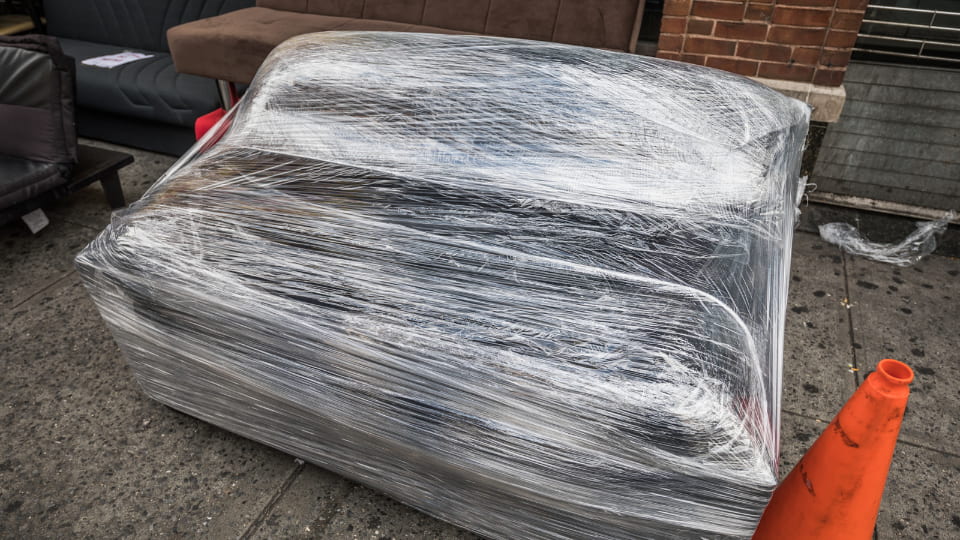
IV. Benefits of Using Shrink Wrap in the Moving Industry
Shrink wrap has transformed the moving industry. Let’s delve into the reasons:
A. Protection Against Dust, Dirt, and Moisture
- Shrink wrap forms a barrier that shields items from environmental factors.
- It’s particularly useful for safeguarding electronics and furniture.
B. Stabilizing and Securing Loads
- Shrink wrap can bind multiple items together, reducing the risk of shifting during transport.
- It is an indispensable tool for professional movers to prevent damage.
C. Clarity and Visibility of Wrapped Items
- Shrink wrap is usually transparent, allowing easy identification of items without opening the packaging.
D. Cost-effective Compared to Other Packaging Materials
- Shrink wrap is relatively lightweight and requires less material than alternatives such as bubble wrap or packing peanuts, saving costs in the moving process.
V. Step-by-Step Guide to Shrink Wrapping for Moving
Knowing how to use shrink wrap properly is vital as a customer or moving professional. Here’s a step-by-step guide:
A. Materials Needed
- Shrink wrap roll
- Heat source (heat gun or hairdryer)
- Scissors
B. Preparing the Items
- Ensure items are clean and dry.
- Remove any loose parts or pieces.
C. Proper Technique of Wrapping
- Start at one end of the item and unroll the shrink wrap around it.
- Ensure it’s snug but not too tight to avoid damage.
- For large items, QShark Moving Company professionals recommend using multiple layers.
D. Safety Considerations
- Be cautious when handling the heat source to avoid burns.
- Ensure proper ventilation as some shrink wraps can release fumes when heated.
E. Tips for Effective Shrink Wrapping by QShark Experts
- Use the right type of shrink wrap for the item.
- Ensure even heating for a tight seal.
- Consider the environmental conditions during the move.
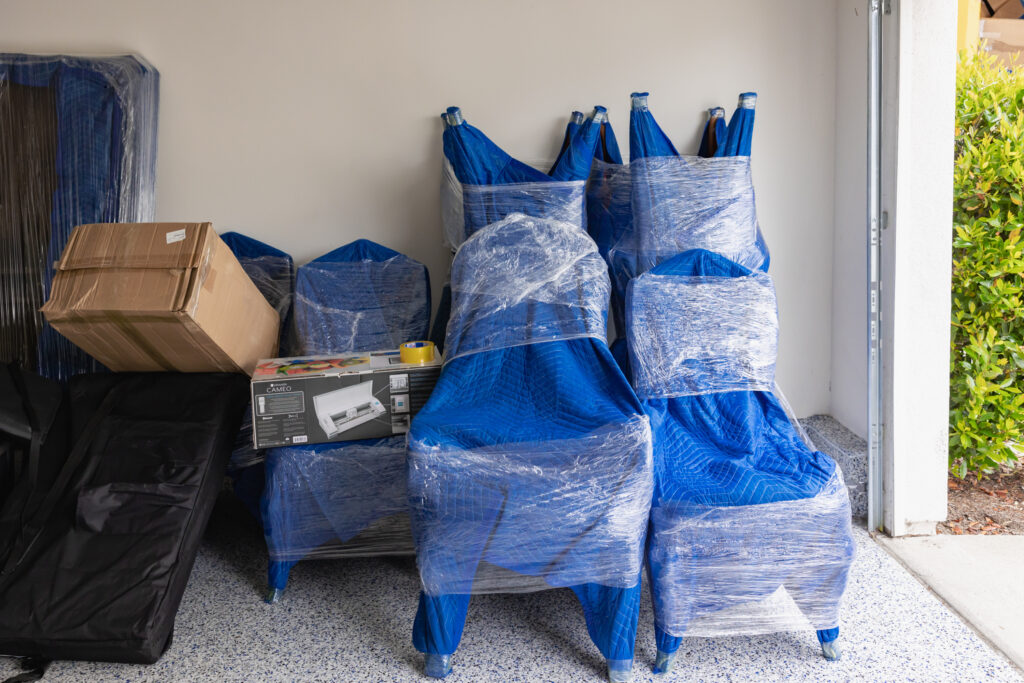
VI. Special Considerations in Shrink Wrapping
A. Handling Fragile Items
- Use padding or bubble wrap in conjunction with shrink wrap for extra protection.
B. Managing Large or Oddly Shaped Objects
- Using an adequately sized shrink wrap and wrapping in sections can help.
- Consult professional movers for specialized wrapping techniques.
C. Seasonal Considerations (Temperature, Humidity)
- In hot weather, shrink wrap may become too tight; in cold weather, it may become brittle.
- Local movers should adjust techniques accordingly.
D. Regulatory Considerations
- Be aware of any laws or regulations regarding the use of plastics for packaging in your area.
VII. Shrink Wrap in Sustainable Moving Practices
Environmental responsibility is paramount. Let’s examine the environmental impact of shrink wrap and how to make its use more sustainable.
Environmental Impact of Shrink Wrap
- Shrink wrap is made from plastic, which is not biodegradable and can contribute to pollution if not disposed of properly.
Recycling and Disposal of Shrink Wrap
- Shrink wrap can be recycled. Make sure to remove any labels or adhesive materials before recycling.
- Some areas have specific recycling programs for plastic films. It’s good practice to find out what’s available in your area.
QShark Moving Company’s Initiatives in Sustainability
- QShark Moving Company is committed to sustainability and encourages clients to recycle used shrink wrap.
- The company continuously explores alternatives and strategies to reduce the environmental impact of moving materials.
X. Conclusion
As we’ve explored, shrink wrap is an essential tool in the moving industry. Its versatile nature and protective properties make it invaluable for ensuring safe and efficient moves. Whether you’re a moving professional or preparing for a personal move, understanding and utilizing shrink wrap effectively is key to a successful moving experience.
IX. Frequently Asked Questions About Shrink Wrap in Moving
Q: What is the best way to recycle shrink wrap after a move?
A: After a move, it’s important to dispose of shrink wrap to minimize environmental impact responsibly. Here’s how you can recycle it:
- Firstly, ensure the shrink wrap is clean and free from any labels or adhesive materials.
- Check with local waste management or recycling centers to see if they accept plastic films. Some areas have specific recycling programs for plastic films.
- If curbside recycling is not an option, you can search for nearby drop-off locations through websites like plasticfilmrecycling.org.
Q: Is shrink wrap safe for all types of furniture?
A: Shrink wrap is generally safe for most types of furniture, but there are exceptions:
- It’s important to ensure wooden furniture is completely dry before wrapping to prevent mold and mildew.
- In the case of leather furniture, it’s advisable to first wrap the item in moving blankets or paper pads before applying shrink wrap, to allow the material to breathe and prevent moisture buildup.
- Always use caution and ensure the wrap is not tightly applied to avoid damaging surfaces.
Q: What alternatives to shrink wrap are available for more sustainable moving?
A: For a more environmentally friendly move, you can consider these alternatives to shrink wrap:
- Moving Blankets and Pads: Reusable moving blankets and pads are a great alternative to protect furniture and large items without plastic.
- Cardboard and Paper: Biodegradable materials like cardboard and paper can protect smaller items.
- Reusable Plastic Bins: Instead of using boxes often wrapped in shrink wrap for extra support, you can opt for reusable plastic bins for packing.
- Biodegradable Shrink Wrap: Biodegradable shrink wrap options are also available from plant-based materials.
Q: How do professionals at QShark Moving Company use shrink wrap effectively?
A: At QShark Moving Company, the use of shrink wrap is optimized through:
- Using padding or moving blankets with shrink wrap for fragile or delicate items.
- Employing experienced techniques to ensure the shrink wrap is applied securely without being too tight.
- Staying informed about, and adhering to, environmental best practices regarding the use and disposal of shrink wrap.


 How to Pack Wine Glasses for Moving
How to Pack Wine Glasses for Moving What Is A Dolly For Moving? And How To Use Them
What Is A Dolly For Moving? And How To Use Them How to Shrink Wrap: Guide for Moving with QShark Movers
How to Shrink Wrap: Guide for Moving with QShark Movers Moving with pets: Tips for making a move less stressful for furry family members.
Moving with pets: Tips for making a move less stressful for furry family members. Senior Moving Services: A Complete Guide to Downsizing and Relocating for Older Adults
Senior Moving Services: A Complete Guide to Downsizing and Relocating for Older Adults